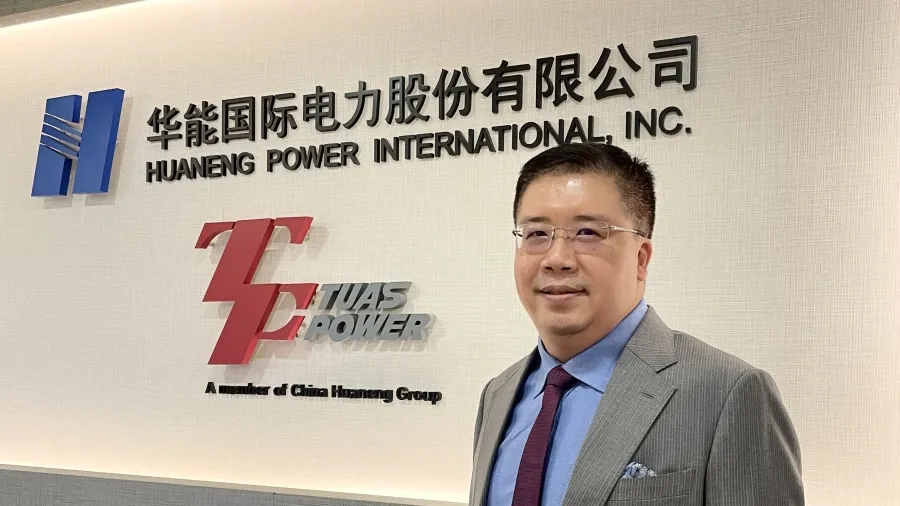
Tuas Power diversifies business for Singapore’s energy transition
The country’s sole operator of a coal/biomass cogeneration plant will rely on the use of more biomass and renewable energy imports for decarbonisation.
As Singapore embarks on its energy transition, Tuas Power, one of the leading power and utility firms in the Lion City, faces a tall order to decarbonise its operations as it runs fossil fuel-power generating facilities, including the sole coal/biomass power plant in the market.
Owned by China Huaneng Group through its subsidiary Huaneng Power International Inc., Tuas Power has a total licensed generating of 2,670MW (megawatts). Its total installed capacity at the Tuas Power Station is 1,876MW which comprises four units of 367.5MW gas turbine-driven combined cycle power plant (CCP) and one unit of 405.9MW gas turbine-driven CCP. These CCPs operate on natural gas. Tuas Power also operates the Tembusu Multi Utilities Complex which uses biomass and coal to produce steam for industrial customers on Jurong Island and for power generation.
The energy generated accounts for over 20% of Singapore’s energy supply.
Speaking to Asian Power, Tuas Power Chief Operating Officer Michael Wong candidly acknowledged that decarbonisation is a challenge for their operations. Unfazed, though, the power company has embarked on initiatives to enhance operational efficiency and reduce carbon emissions in its existing plants.
Wong said this entails significant upgrades. Some of the measures Tuas Power is implementing for the energy transition are increasing the share of biomass use for power generation, and exploring importation of renewable energy from Indonesia, he said.
The need for diversification becomes apparent and initiatives in that direction are being pursued by the company as a commitment to meeting the carbon emission targets by 2030 and 2050, he said.
Tuas Power employs what Wong referred to as “4D” strategies to ensure compliance with the country’s net-zero goals whilst ensuring sufficient supply. He shared more about it in detail in this interview.
How has the company performed so far this year? Please name some of your notable achievements.
Tuas Power has been successfully supporting the security of the supply of electricity to consumers in Singapore. We expect to generate more than 10,000 gigawatt-hours from our power plants. That will constitute more than 20% of the market share for the whole of Singapore. That is attributed to our efforts to make use of our capacity for running five combined cycle plants whenever available.
What challenges did you encounter, and how did you address them?
Singapore is going through an energy transition. There are a lot of concerns about this. For example, the carbon tax is going to escalate from $5 (US$3.74) per tCO2e to $25 (US$18.69) per tCO2e, starting from 2024, and then increasing to $45 from 2026 to 2027, with a view of reaching $50 to $80 (US$37.37–US$59.80) per tonne by 2030. There is a concern about how the energy transition can galvanise us towards the emission target by 2030 and then net zero by 2050.
One of the challenges for Tuas Power will be how we are going to decarbonise. There are several initiatives we have been working on. For our existing plants, we have been upgrading them to improve their efficiency to reduce carbon emissions. We are also embarking on a conversion project to increase the use of biomass for the multi-utilities plant which will also help to reduce carbon emissions.
We have a plant which is burning a mixture of coal and biomass. The design of the plant allows a fuel mix of 80% coal and 20% biomass. Currently, we are using about 70% coal and 30% biomass, but we are still trying to increase the proportion of the biomass in the years to come.
At the same time, we are looking seriously into power import projects in Singapore. We have signed an MOU with a partner, PT Marubeni Global Indonesia, which is working on the Industrial Park National Strategy Project in the Batam area in Indonesia, to both supply the local market and export close to 600 megawatts of power to Singapore. We are working to start export and import as early as 2027.
The minister also shortlisted six out of 26 proposals for the hydrogen ammonia pilot project. Tuas Power consortium is one of the six. We are working with our partners, EDF and ITOCHU, on coming up with more detailed proposals for the government for the upcoming request for proposal process.
As for the challenges in the Singapore energy transition, there are many uncertainties and options; we are not sure which one will be more successful. We also need to balance the trilemma problem statement — which is how to make sure there’s a security of supply; sustainability in terms of reducing carbon emissions; and to make energy affordable for the consumers. We are working tirelessly to review all the options for the best ones.

Tembusu Multi-Utilities Complex. Photo from Tuas Power.
What are the current trends in Singapore’s electricity market?
Since the Russia-Ukraine war, people have been concerned about energy security, meaning the security of supply for Singapore because we are heavily dependent on natural gas. Around 95% of the power generated in the country is by burning natural gas. Secondly, there are concerns about the prices, especially as you actually see the price going upward when the carbon tax progressively increases. People will be concerned about whether the cost of power will go up further. ‘What will be the acceptable or affordable level at the end of the day?’ ‘What is the zero carbon price for electricity?’ People will also be more conscious of that.
How do these trends affect your operations?
One of our social responsibilities is to maintain our supply of electricity so that we can continue to sell and supply electricity and fulfil the contracts with our customers. Even when the market is tight, we actually have been supplying and renewing the contracts we have with our own customers. Although we are not the biggest player in Singapore — capacity-wise and in terms of generation — we have been taking a lead, either the No. 1 or No. 2 position in the market.
The first point is we have to take up the social responsibility to meet the expectations of the customers. Secondly, regarding the trend to go green, Tuas Power has also put into a pipeline, our plans on how to meet customer expectations to give them a choice of green energy. That is why we have signed an MOU, bringing in energy from Indonesia generated by solar power, giving our customers a choice between solar-generated or traditional gas-fired electricity, or even a bundle of both types.

Tuas Power Station. Photo from Tuas Power.
What projects can we expect from Tuas Power?
There are four areas we focus on which I can summarise as “4D.” In Singapore, 4D is a game where you bet on a four-digit number and hope to win a fortune. In the same way, Singapore’s energy transition also relies on 4Ds: decarbonise, digitalise, diversify and develop talents.
For Tuas Power, decarbonisation is vital, as I mentioned earlier. Digitalisation is important because we need to find a smart way to optimise the various supply sources and to ensure we achieve the best efficiency and most optimised outcomes. That is where digitalisation such as AI technologies can help.
When it comes to diversifying the business, it should be emphasised that there is no single solution to meet the carbon emission targets by 2030 and 2050. We still need to work on different options and this is how we can diversify into the different areas of the business. This year we have successfully commissioned the Jurong Island Desalination Plant (JIDP) under a joint venture partnership. The plant is capable of supplying up to 30 million gallons per day of potable water to the Public Utilities Board (PUB). Tuas Power is also participating in power import, hydrogen, and carbon capture projects.
At last of the 4Ds is the most important: how to develop our talents. Although we have a very strong workforce in the industry, we cannot be complacent as a lot of changes have evolved. We need to make sure our people are equipped with the necessary skill sets to take the lead in the new energy landscape.
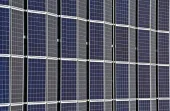

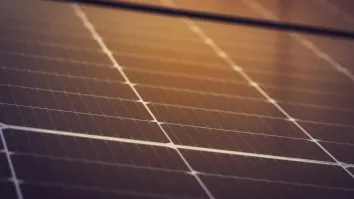
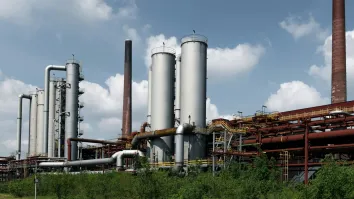
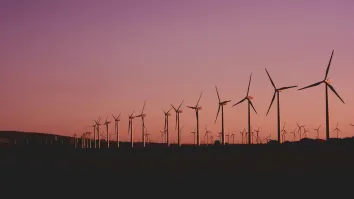
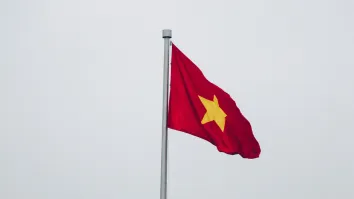
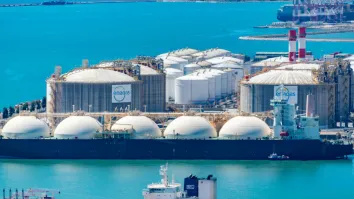












 Advertise
Advertise







